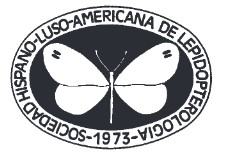Rhopalocera in modified landscape: The Mizoram University Campus, Aizawl, Mizoram, India (Lepidoptera: Papilionoidea)
DOI:
https://doi.org/10.57065/shilap.904Keywords:
Lepidoptera, Papilionoidea, Rhopalocera, survey, biodiversity, conservation, habitat, IndiaAbstract
A survey for the diversity of Rhopalocera at the Mizoram University (MZU) campus was carried out in selected areas with different habitat types. Pollard walks sampling method was adopted, and 16 randomly selected permanent line transects were established in three different sites. The length of the studied transacts was 500 m and the breadth was a region covered by visual observation on both sides from the point of observation along the length. Survey was carried out during September to November 2016 and from February to May 2017. A total of 3,618 individuals of 78 species of these insects belonging to six families were recorded. Maximum number of species recorded belonged to the family Nymphalidae while the family Riodinidae is represented by one species only. Three rare species namely, Parthenos sylvia (Cramer, 1775), Elymnias patna (Westwood, 1851), and Tanaecia lepidea (Butler, 1868) were also recorded. Another consequential aspect in this study is the record of Euploea midamus (Linnaeus, 1758), Castalius rosimon (Fabricius, 1775), Jamides allectus (Grose-Smith, 1894), Euploea mulciber (Cramer, [1777]), and Polytremis discreta (Elwes & Edwards, 1897), which are categorized into different conservation schedules of the Indian Wildlife (Protection) Act of 1972 with amendment made in 2022. Nymphalidae is the most diverse (H = 3.295) and dominant species (D = 22.727) while evenness is highest for the family Pieridae (E = 0.973) and diversity, dominance, and evenness (H = 1.818, D = 5.646, E = 0.826) is least for the family Lycaenidae. This study manifest that the modified habitats are also important repository for biodiversity which also need attention for conservation
Downloads
Global Statistics ℹ️
|
683
Views
|
236
Downloads
|
|
919
Total
|
|
References
Barua, K. K. (2007). Diversity and habitat selection of Papilionidae in a protected forest reserve in Assam, Northeast India. [Ph. D. Thesis] Georg-August University.
Bora, A., & Meitei, L. R. (2014). Diversity of butterflies (Order: Lepidoptera) in Assam University Campus and its vicinity, Cachar district, Assam, India. Journal of Biodiversity and Environmental Science, 5(3), 328-339
Courtney, S. P (1986). The ecology of Pieridae butterfly: Dynamics and Interaction. Advances in Ecology Research, 15, 51-115. https://doi.org/10.1016/S0065-2504(08)60120-8 DOI: https://doi.org/10.1016/S0065-2504(08)60120-8
De Vries, P. J. (1987). The Butterflies of Costa Rica and Their Natural History: Papilionidae, Pieridae, Nymphalidae (Vol. 1). Princeton University Press.
De Vries, P. J. (1997). The Butterflies of Costa Rica and Their Natural History: Riodinidae (Vol. 2). Princeton University Press.
Evans, W. H. (1932). The identification of Indian Butterflies. Bombay Natural History Society Publication.
Eswaran, R., & Pramod, P. (2005). Structure of butterfly community of Anaikatty hills, Western Ghats. Zoo’s Print, 20, 1939-1942. https://doi.org/10.11609/JoTT.ZPJ.1330.1939-42 DOI: https://doi.org/10.11609/JoTT.ZPJ.1330.1939-42
Fahrig, L. (2003). Effects of habitat fragmentation on biodiversity. Annual Review of Ecology, Evolution, and Systematics, 34, 487-515. https://doi.org/10.1146/annurev.ecolsys.34.011802.132419 DOI: https://doi.org/10.1146/annurev.ecolsys.34.011802.132419
Fernández, I. C., & Simonetti, J. A. (2013). Small mammal assemblages in fragmented shrub lands of urban areas of Central Chile. Urban Ecosystems, 16, 377-387. https://doi.org/10.1007/s11252-012-0272-1 DOI: https://doi.org/10.1007/s11252-012-0272-1
Ghosh, S. K., & Majumder, M. (2007). Fauna of Mizoram (Insecta: Lepidoptera). State Fauna Series, 14, 399-412.
Gogoi, M. J. (2012). Butterflies (Lepidoptera) of Dubang valley, Mishmi hills, Arunachal Pradesh, India. Journal of Threatened Taxa, 4(12), 3137-3160. https://doi.org/10.11609/JoTT.o2975.3137-60 DOI: https://doi.org/10.11609/JoTT.o2975.3137-60
Gupta, I. J. ( 2007). Fauna of Mizoram (Insecta: Lepidoptera). State Fauna Series, 14, 427-453.
Gupta, I. J., & Maulik, D. R. (2007). Fauna of Mizoram (Insetca: Lepidoptera). State Fauna Series, 14, 413-426.
Guthula,V. B., Shroyriya, S., Nigam, P., Goyal, S. P., Mohan, D., & Habib, B. (2022). Biodiversity significance of small habitat patches: More than half of Indian birds’ species are in academic campuses. Landscape and Urban Planning, 228, 104552-104565. https://doi.org/10.1016/j.landurbplan.2022.104552 DOI: https://doi.org/10.1016/j.landurbplan.2022.104552
Haddad, N. M., Brudvig, L. A., Clobert, J., Davies, K. F., Gonzalez, A., Holt, R. D., & Townshend, J. R. (2015). Habitat fragmentation and its lasting impact on Earth’s ecosystems. Science Advances 1(2), 1-10. https://doi.org/10.1126/sciadv.1500052 DOI: https://doi.org/10.1126/sciadv.1500052
Hossain, M. A., & Ahmad, A. (2017). Livelihood status of hill dwellers in Bandarban, Bangladesh. International Journal of Business, Management and Social Research, 3(1), 154-161. https://doi.org/10.18801/ijbmsr.030117.18 DOI: https://doi.org/10.18801/ijbmsr.030117.18
Kehimkar, I. (2008). The Book of Indian Butterflies. Bombay Natural History Society Publication.
Khanal, B., Chalise, M. K., & Solanki, G. S. (2013). Threatened butterflies of Central Nepal. Journal of Threatened Taxa, 5(11), 4612-4615. https://doi.org/10.11609/JoTT.o2825.4612-5 DOI: https://doi.org/10.11609/JoTT.o2825.4612-5
Kocher, S. D., & Williams, E. H. (2000). The diversity and abundance of North American butterflies vary with habitat disturbance and geography. Journal of Biogeography, 27, 785-794. https://doi.org/10.1046/j.1365-2699.2000.00454.x DOI: https://doi.org/10.1046/j.1365-2699.2000.00454.x
Kunte, K. J. (1997). Seasonal patterns in butterfly abundance and species diversity in four tropical habitats in northern Western Ghats. Journal of Biosciences, 22, 593-603. https://doi.org/10.1007/BF02703397 DOI: https://doi.org/10.1007/BF02703397
Krishnakumar, N., Kumaraguru, A., Thiyagesan, K., & Asokan S. (2007). Diversity of papilionid butterflies in the Indira Gandhi Wildlife Sanctuary, Western Ghats, Southern India. Tiger Paper, 35, 1-8.
Lalchhuanawma (2008). Ecological studies on plant diversity and productivity of herbaceous species in Mizoram university campus at Tanhril, Aizawl, Mizoram (N. E. India). [Ph. D. Thesis]. Mizoram University.
Lalthafamkima, K. (2017). Study on diversity of spiders inside Mizoram University campus, Aizawl, Mizoram. [M. Sc.]. Mizoram University.
Liu, J., Yu, M., Tomlinson, K., & Slik, J. W. F. (2017). Patterns and drivers of plant biodiversity in Chinese university campuses. Landscape and Urban Planning, 164, 64-70. https://doi.org/10.1016/j.landurbplan.2017.04.008 DOI: https://doi.org/10.1016/j.landurbplan.2017.04.008
Liu, J., Zhao, Y., Feng, G., Slik, F., & Zhang, J. (2021). University campuses as valuable resources for urban biodiversity and conservation. Urban Forestry and Urban Greening, 64, 127255. https://doi.org/10.1016/j.ufug.2021.127255 DOI: https://doi.org/10.1016/j.ufug.2021.127255
Mazumdar, K., Soud, R. & Gupta, A. (2011). Mammalian diversity of degraded forest habitats around Assam University Campus, Cachar, Assam, India, with notes on conservation status. Our Nature 9, 119-127. https://doi.org/10.3126/on.v9i1.5742 DOI: https://doi.org/10.3126/on.v9i1.5742
Nerlekar, A. N., Warudkar, A. M., Gowande, G. G., Salve, S. S., Raut, A. S., Patankar, R., & Nalavade, S. B. (2016). A review of the faunal diversity of the Fergusson College campus, Pune, India. Zoo’s Prints, 29(10), 4-25.
Opdam, P., Verboom, J. & Pouwels, R. (2003). Landscape cohesion: an index for the conservation potential of landscapes for biodiversity. Landscape Ecology, 18, 113-126. https://doi.org/10.1023/A:1024429715253 DOI: https://doi.org/10.1023/A:1024429715253
Pielou, E. C. (1969). An Introduction to Mathematical Ecology. John Wiley, New York.
Pereira, H. M., Navarro, L. M., & Martins, I. S. (2012). Global biodiversity change: The bad, the good, and the unknown. Annual Review of Environment and Resources, 37(1), 25-50. https://doi.org/10.1146/annurevenviron-042911-093511 DOI: https://doi.org/10.1146/annurev-environ-042911-093511
Pollard, E., & Yates, T. J. (1993). Monitoring Butterflies for Ecology and Conservation: The British Butterfly Monitoring Scheme. Chapman and Hall.
Saikia, M. K. (2014). Diversity of tropical butterflies in urban altered forest at Gauhati University campus, Jalukbari, Assam. Journal of Global Bioresources, 3(2), 452-463.
Sailo, L., Solanki, G. S., & Lalhruaizela, C. (2019). Avian diversity in Mizoram University Campus, Aizawl, Mizoram. Science and Technology Journal, 7(1), 54-68. https://doi.org/10.22232/stj.2019.07.01.08 DOI: https://doi.org/10.22232/stj.2019.07.01.08
Shannon, C. E. (1948). A mathematical theory of communication. Bell System Technical Journal, 27(4), 379-423. https://doi.org/10.1002/j.1538-7305.1948.tb00917.x DOI: https://doi.org/10.1002/j.1538-7305.1948.tb01338.x
Simpson, E. H. (1949). Measurement of diversity. Nature, 163, 688. https://doi.org/10.1038/163688a0 DOI: https://doi.org/10.1038/163688a0
Singh, A. P. (2010). Butterfly diversity in tropical moist deciduous sal forests of Ankua Reserve Forest, Koina Range, Saranda Division, West Singhbhumi District, Jharkhand, India. Journal of Threatened Taxa, 2(9), 1130-1139. https://doi.org/10.11609/JoTT.o2274.1130-9 DOI: https://doi.org/10.11609/JoTT.o2274.1130-9
Swinhoe, C. (1905-1910). Lepidoptera Indica (Part VII). Reeve & Co. Ltd.
Talbot, G. (1947). The Fauna of British India, including Ceylon and Burma: Butterflies (Vol. II). Taylor and Francis.
Teegalapalli, K., Gopi, G. V., & Samal, P. K. (2009). Forest recovery following shifting cultivation: an overview of existing research. Tropical Conservation Science, 2(4), 374-387. https://doi.org/10.1177/194008290900200401 DOI: https://doi.org/10.1177/194008290900200401
The Wildlife (Protection) Act 1972. Natraj Publishers.
Vallejo, B., Aloya, A., Ong, P., Tamino, A., & Villasper, J. (2008). Spatial patterns of bird diversity and abundance in an urban tropical landscape: The University of the Philippines Diliman campus. Science Diliman, 20(1), 1-10. https://doi.org/10.54645/IPYZ58175 DOI: https://doi.org/10.54645/IPYZ58175
Vanlalhlimpuia (2012). Diversity of herpetofauna in Mizoram University campus, Aizawl, Mizoram. [M. Sc.]. Mizoram University.
Varshney, R. K., & Smetacek, P. (eds). (2015). A Synopsis Catalogue of the Butterflies of India. Bhimtal and Indinov Publishing.
Voon, A. M., Nasradhi, K. A., Rahman, M. A., & Azlan, J. M. (2014). Bird diversity, density, and foraging activities in a university campus landscape in Sarawak. Borneo Journal of Resources Science and Technology, 4(2), 9-20. https://doi.org/10.33736/bjrst.232.2014 DOI: https://doi.org/10.33736/bjrst.232.2014
Wintle, B. A., Kujala, H., Whitehead, A., Cameron, A., Veloz, S., Kukkala, A., & Bekessy, S. A. (2018). Global synthesis of conservation studies reveals the importance of small habitat patches for biodiversity. Proceedings of the National Academy of Sciences of the United States of America, 116(3), 909-914. https://doi.org/10.1073/pnas.1813051115 DOI: https://doi.org/10.1073/pnas.1813051115
Yadav, P. K. (2013). Slash-and-burn agriculture in north-east India. Expert Opinion in Environment and Biology, 2(1), 1-4. https://doi. org/10.4172/2325-9655.1000102 DOI: https://doi.org/10.4172/2325-9655.1000102
Zothansangi, C., Ruati, V. L., Senthil, K. S. N., Gurusubramanian, G., & Lalremsanga, H. T. (2018). A preliminary survey of butterfly diversity in Dampa Tiger Reserve of Mizoram, Northeast India. Conference: Issues and Trends of Wildlife Conservation in Northeast India 2014. Mizoram University. Zoological Survey of India (2007). Fauna of Mizoram. State Fauna Series, 14, 692.
Published
How to Cite
Issue
Section
License

This work is licensed under a Creative Commons Attribution 4.0 International License.
The author SS retains his trademark and patent rights to any process or procedure within the article.
The author retains the right to share, distribute, perform and publicly communicate the article published in SHILAP Revista de lepidopterología, with initial acknowledgement of its publication in SHILAP Revista de lepidopterología.
The author retains the right to make a subsequent publication of his work, from using the article to publishing it in a book, provided that he indicates its initial publication in SHILAP Revista de lepidopterología.
Each submission to SHILAP Revista de lepidopterología must be accompanied by an acceptance of copyright and acknowledgement of authorship. By accepting them, authors retain copyright of their work and agree that the article, if accepted for publication by SHILAP Revista de lepidopterología, will be licensed for use and distribution under a "Creative Commons Attribution 4.0 International" (CC BY 4.0) licence that allows third parties to share and adapt the content for any purpose giving appropriate credit to the original work.
You may read here the basic information and the legal text of the license. The indication of the CC BY 4.0 License must be expressly stated in this way when necessary.
As of 2022, the content of the print and digital version is licensed under a "Creative Commons Attribution 4.0 International License" (CC BY 4.0), licence that allows third parties to share and adapt the content for any purpose giving appropriate credit to the original work.
Previous content in the journal was published under a traditional copyright licence; however, the archive is available for free access.
When using the contents of SHILAP Revista de lepidopterología published before 2022, including figures, tables or any other material in printed or electronic format belong to the authors of the articles, the authors must obtain the permission of the copyright holder. Legal, financial and criminal liabilities in this respect belong to the author(s).
In application of the Principle of Priority of the International Code of Zoological Nomenclature, no other version than the one published by the publisher may be deposited in repositories, personal websites or similar.





























